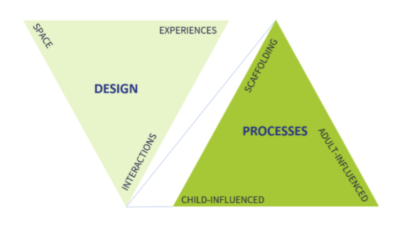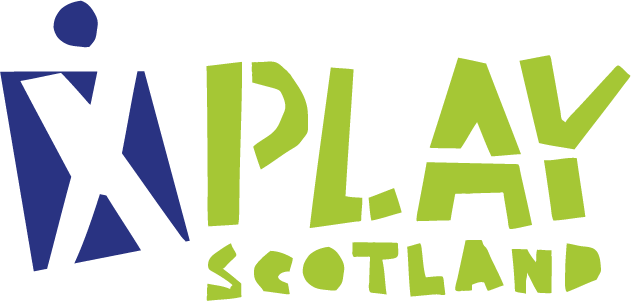Playful Pedagogy entails an endless and satisfying journey of discovery, which for many practitioners is about true teaching. A helpful metaphor for thinking about it is A Learning Adventure.
The goal of the adventure is to facilitate experiences which enable your class, and every individual child within it, to determine their own learning goals and pathways while remaining within the CfE framework.
Before starting, it’s important to familiarise yourself with the two main threads you will be weaving in:
- The unique needs, capacities and interests of your pupils.
- All Stages 0-1 CfE experiences and outcomes.
Designing your first Learning Adventure. Below is a Figure and some overarching questions which provide a tool for thinking and reflecting on the design of your first adventure, and on the interactions (i.e. the learning processes) involved.
The Design Triangle is where you start, and the Process Triangle are the learning interactions which occur as your adventure pans out. The “scaffolding” of your experience is what connects the two, i.e. the topic, provocation and challenge that gets your adventure going.

- Experiences. What CfE E&Os could provide a motivating topic, provocation and challenge for an open-ended learning adventure (or vice versa)?
Some E&Os already mention play, others that involve words such as ‘create’, ‘recreate’, ‘explore’, ‘experiment’ and ‘choose’ are also ripe candidates.
- Spaces. What qualities of the physical setting and materials could enable and support individual motivation, curiosity and creativity during our adventure?
Rich settings (ideally outdoors) and loose materials, which can enable movement, challenge, and imagination, and promote whole-class curiosity and creativity!
- Interactions. What learning processes could be involved in the experience, and to what extent will and should the adventure and interactions be influenced by the child, an adult, or by the scaffolding (i.e. the topic, provocation and challenge)?
The first principle of Playful Pedagogy is always to nurture children’s capacity to determine their own learning goals and pathways. However, curricular objectives mean interactions necessarily involve a balance between the three.
The case study and resource below provide further detail and insight on first steps to integrating Playful Pedagogy in your teaching practice.




